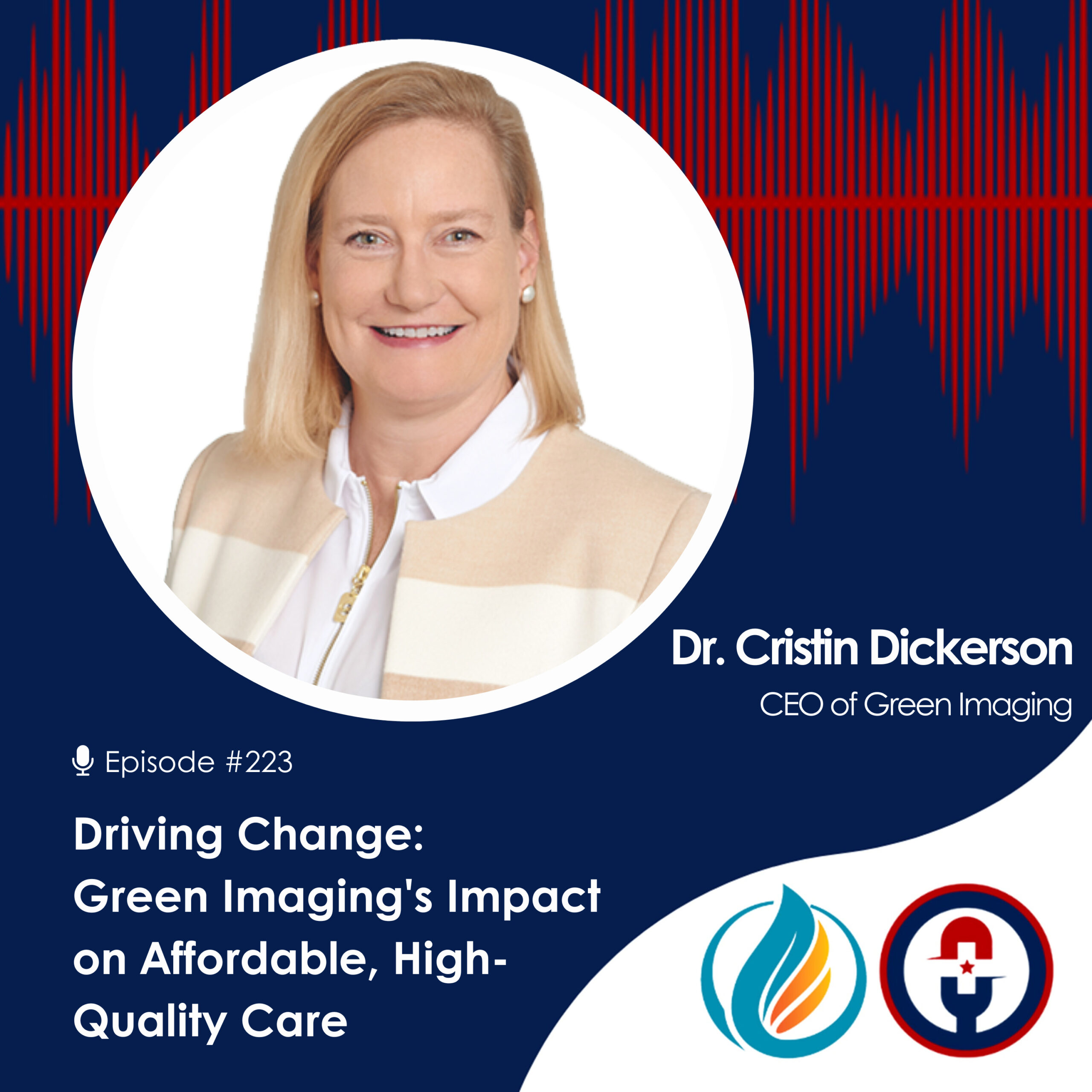
Direct-Care Healthcare Models Are Surging At Every Level

Healthcare Industry Watch 2019
The story of direct healthcare at all scales, from patient-physician relationships to direct contracting agreements between employers and health care providers, is deeply connected to and informed by the larger story (or tragedy) of the American healthcare system. It is also a story of American resilience in the face of a system that makes so little sense that even industry insiders can’t figure it out.
It is often said that “Where there is a will, there's a way.”
Nowhere does this ring truer than in the rapid growth of direct care models in the United States.
"A free market approach may be the best way to steer money and funds to the businesses that provide the best care at the most competitive rate."
--- DR. CRISTIN DICKERSON, MD
Nowhere does this ring truer than in the rapid growth of direct care models in the United States.
What is Direct Healthcare?
Direct healthcare is, to put it simply, the act of cutting out all the middlemen and bureaucratic red tape between a patient and his doctor.
At an individual level, direct healthcare might look like a patient who opts to have a non-emergency MRI procedure outside of their insurance. While the patient could have the procedure done through his insurance at a well-known facility or in-network hospital, where MRI’s can easily run thousands of dollars, it is far more cost-effective and easier to have the procedure at a much less expensive independent imaging facility, like Green Imaging.
By paying out of pocket, patients can avoid all the middlemen, including insurance companies and third-party payers as well as all the hassle that entails. This is direct healthcare at its simplest.
So-called direct primary care (DPC) follows the same logic except instead of paying out of pocket for an MRI, patients directly compensate their primary care doctor or physician for healthcare services.
Proponents of direct-care models point out that by cutting out the middlemen, especially insurance companies who skim a profit off the top of any transaction between a doctor and their patient, prices can be dramatically lowered.
Transparent and Affordable Healthcare
Removing a so-called third-party payer creates a more transparent market with prices for various healthcare services and products widely available and easy to find. In other words, by removing obstructions such as insurance companies which control access to health care providers, the healthcare market can be freer, more transparent, and more affordable for everyone.
Indeed this approach to healthcare is becoming more and more popular as the numerous attempts at healthcare reform have come and gone with little to show in the way of improvements.
Sure, the Affordable Care Act, also known as Obamacare, granted nearly 20 million new healthcare enrollees some basic healthcare coverage. However, it also led to runaway consolidation and health care monopolies. It did nothing to contain the rise in premiums, and, perhaps most damningly, did nothing to uproot the entrenched health care interests and middlemen.
Mergers and Acquisitions Spree
Instead, Obamacare handed the CEOs and executives of these special interests millions in profits. Unsurprisingly, as if to underscore the utterly imbalanced nature of the healthcare market these days, none of those profits went into lowering insurance premiums. Instead, record profits in all sectors of the healthcare industry from pharmaceutical companies to hospitals to multinational health insurance conglomerates all ended up as executive bonuses, new building projects, or, in the case of the insurance companies, a mergers and acquisitions spree.
Direct Healthcare Models: Scaling Up, Growing Up
In response to this, it’s no wonder direct care models are getting more attention and buy-in from the public as well as from the private sector.
According to results from The Large Employers' 2019 Health Care Strategy and Plan Design Survey, companies are expecting another 5 percent increase in the cost of providing health care coverage and benefits to their employees. That’s the sixth consecutive annual increase in a row.
As a result, more and more companies are turning to direct healthcare models such as direct contracting. Thirty-five percent of companies surveyed indicated they are implementing alternative payment and delivery models. More illuminatingly, while only 3 percent of companies surveyed said that they had engaged in direct contracting with health care providers, over 11 percent of companies are projected to do so in 2019.
Explosive Growth In Direct-Pay & Direct Contracting Healthcare Models
While direct-pay and direct-contracting models still remain firmly in the minority, the explosive rate of growth in the span of a single survey year is indicative of innovation (and desperation) in the private sector in regards to providing healthcare for their employees.
Joint Healthcare Venture
One particularly spotlighted foray involves a joint healthcare venture by JPMorgan Chase, Berkshire Hathaway, and Amazon. Like most American companies that do not directly profit from the current health care status quo, these three powerful American giants are pooling their money, infrastructure, resources, and employees themselves to take on the entrenched interests such as hospital conglomerates and insurance agencies.
Together these companies employ nearly 1 million people worldwide. By merging their employees into a single healthcare risk pool, these companies may be able to effectively create their very own health insurance conglomerate that is “free from profit-making incentives and constraints”.
Cutting Out the Middleman
What this means is that they’re cutting out the middleman and dealing directly with healthcare providers.
Insurance companies have traditionally played the role of creating and managing risk pools and negotiating with providers to control prices. However, insurance companies are also profit-seeking companies beholden to investors, not their customers. As a result, any savings gained at the negotiating table go to shareholders or into executive pay packages -- savings that are never passed on to consumers and employers.
Direct-Care Challenges
By engaging in direct-care models, consumers and employers alike can sidestep the middlemen. However, before the direct-care model can be fully adopted there are some challenges that need to be overcome.
At the individual level, emergency medical care and catastrophic care simply cannot be completely accounted for with a direct-care model. Emergency care and truly catastrophic conditions are expensive and require risk pooling technologies to make paying for them economically feasible for consumers and companies. Most DCP practices recommend that their patients get some form of supplementary health insurance coverage such as a high-deductible, wraparound policy to cover emergencies.
In this sense, insurance companies and other third-party payers may still have a role to play, albeit a significantly diminished one. However, for the vast majority of medical goods and services from primary care to prescription drugs, direct-pay models may well be the way of the future.
Saving Healthcare
Affordable health care for those who need it is the goal.
A free market approach may be the best way to steer money and funds to the businesses that provide the best care at the most competitive rate. Successful models can then be adapted to care provided by the public sector.
But for the free market to work, we need to clean it up. We need to eliminate or mitigate the barriers that have either been purposefully erected or have developed over time and become entrenched. These barriers to the free market, including health care monopolies and cartels, hidden and unclear pricing, government intervention, insurance middlemen, and many more, that need to be addressed. The goal should be to allow natural market forces to run their course within a framework of our own compassionate design. What we need are free and fair markets to save America’s health care.
Green Imaging: Helping Direct Care Practices in Texas and Beyond
Green Imaging assists TPAs, employers, DPC practices, traditional doctors'offices, and individuals by providing quality diagnostic imaging services at rates well below that of most imaging facilities. There is no extra charge for the radiologist fee. No paperwork. No bureaucracy. No surcharges. No problems.

















